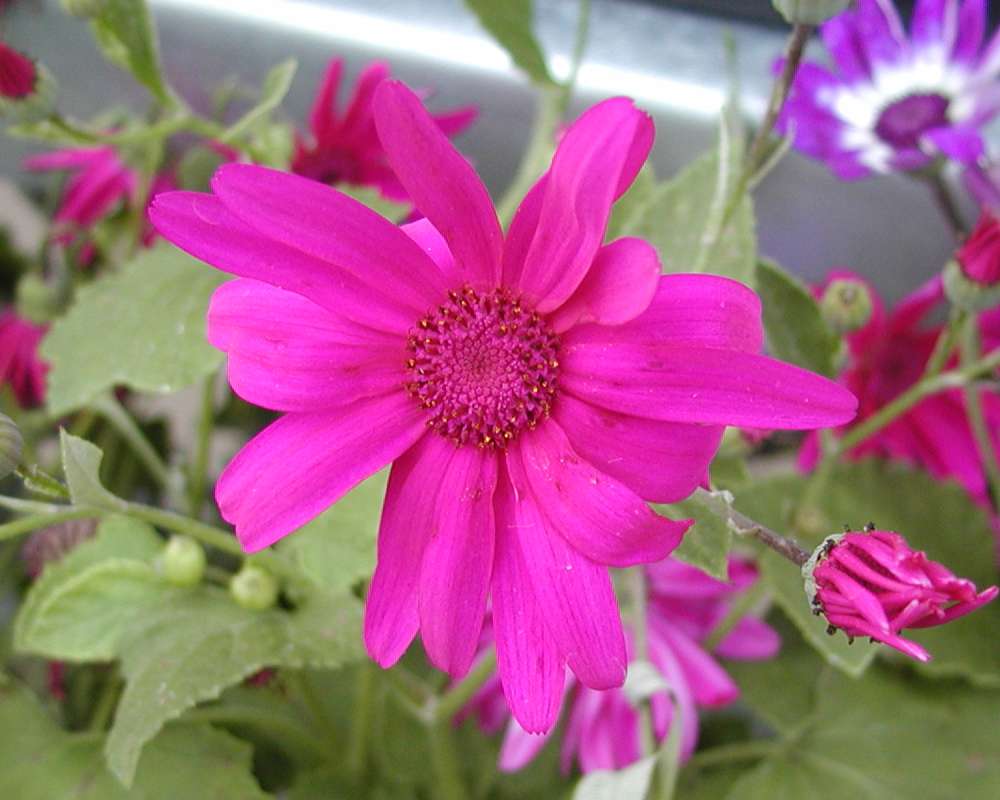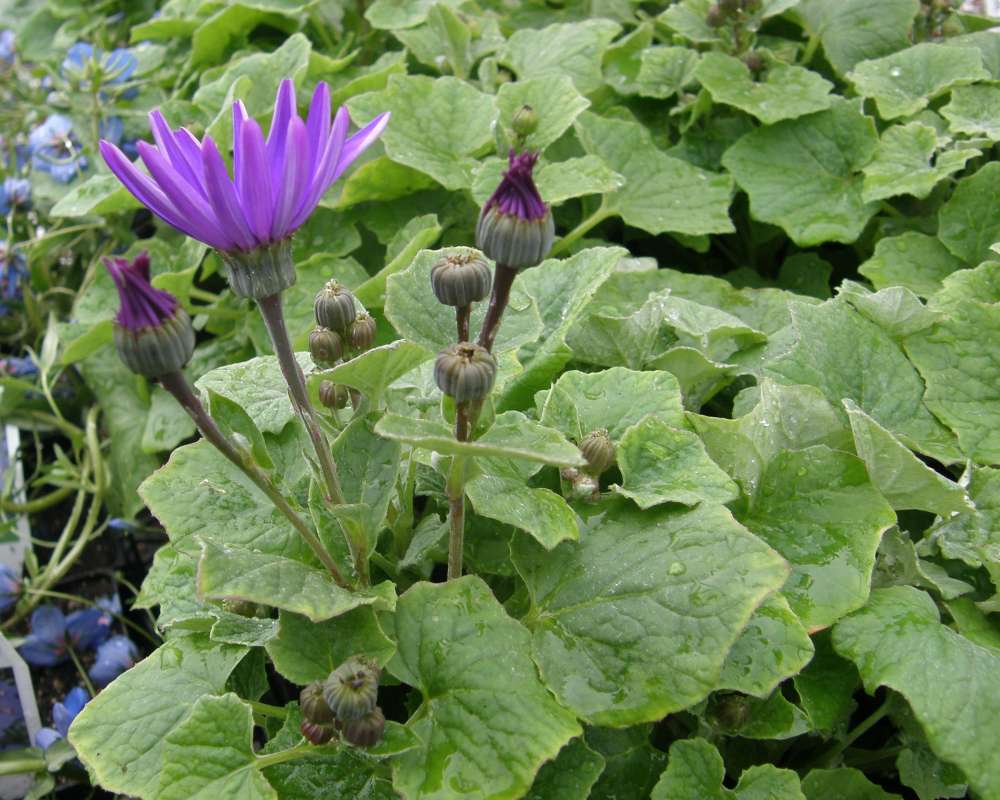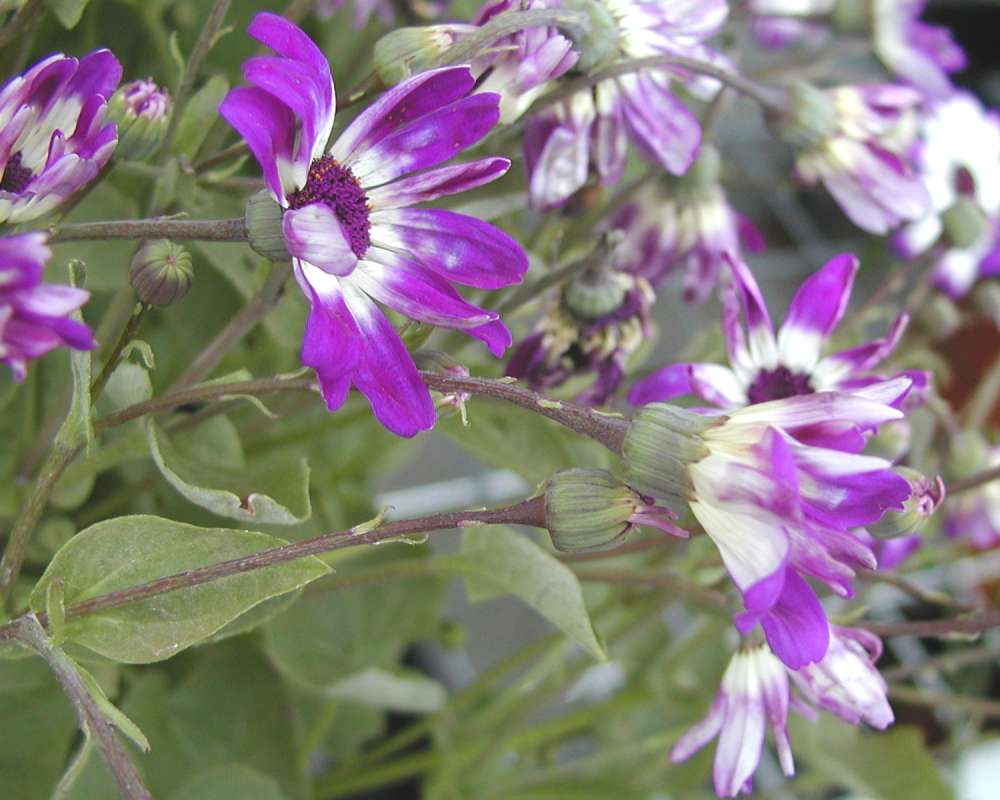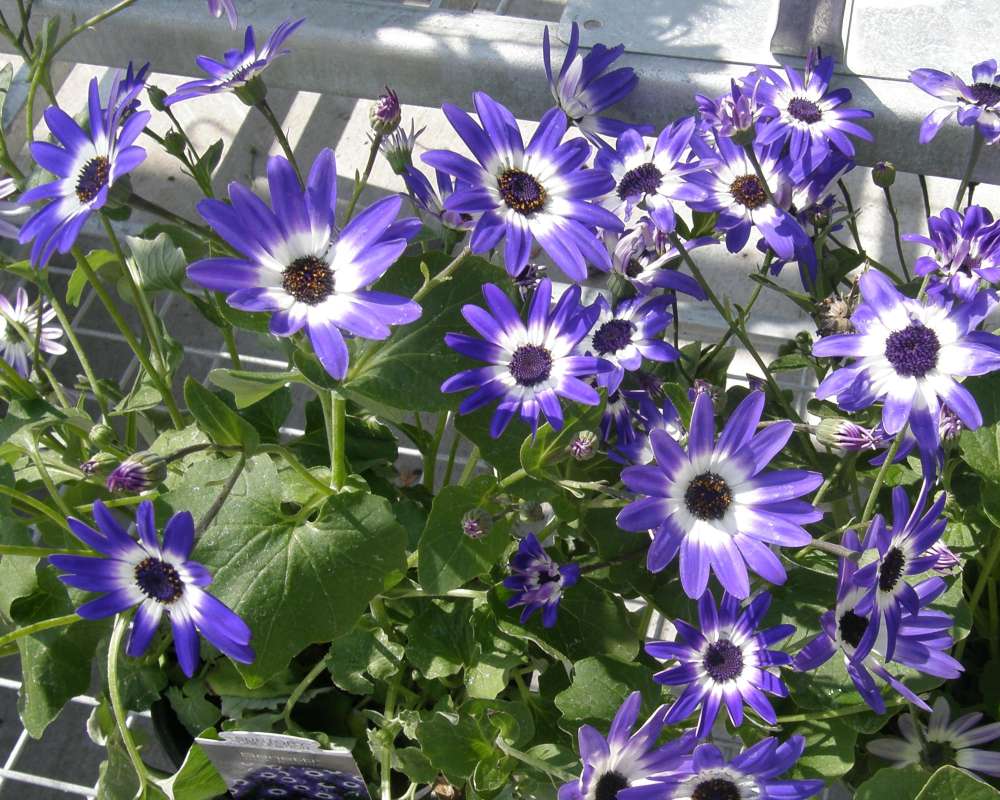SPECIES INFO
Cinebaria (Senecio hybrids to Pericallis hybrids) are popular garden flowers. This hybrid is probably derived from P. cruenta. (P. cruenta is a perennial herb that can grow to about 3 feet high. Its leaves can be ovate, lanceolate, or triangular-cordate.)Pericallis genus is native to the Canary Islands and other adjacent Atlantic islands. This genus consists of about 15 species of perennials and sub-shrubs.
There are about 3,000 species in this tribe per Heywood. These are herbs or shrubs. Some species are more or less succulent.
Composite or Daisy or Aster Family (Compositae or Asteraceae) is a huge family of perhaps over 20,000 species. Sometimes the Chicory portion of this family is treated as a separate family. Here the Chicory group is treated as the most advanced tribe in the Composite Family. (The tribes are as suggested by Lawrence in his book, Taxonomy of Vascular Plants.)
Many species of this family are characterized by large flower heads composed of many very small flowers and leaves that appear as petals (bracts). These cause the large flower heads to appear as a single large flower. The center of the "flower" of a common sunflower contains a multitude of tiny flowers.
To facilitate study of this large and complicated family, the Composites are usually broken down into different tribes:
1 Vernoninae - Ironweeds
2 Eupatorieae - Bonesets, Joe-Pye Weeds
3 Astereae - Asters and Goldenrods, etc.
4 Inuleae - Inula, Elecampane, Pussytoes
5 Heliantheae - Sunflowers, etc.
6 Helenieae - Sneezeweeds
7 Anthemideae - Camomile, Yarrow
8 Senecioneae - Ragwort, Senecio
9 Calenduleae - Calendula, Most Old World
11 Cynareae - Thistles, Burdock
13 Cichoriacea - Dandelions
There are over 20,000 species arranged in about 1,300 genera in this family.
As of 1994, there were about 2,700 species in almost 400 genera either native to or established in greater North America, including Puerto Rico, the Virgin Islands, Hawaii, and Greenland.
Campanulate is a large order usually divided into six different families. The largest of these is the Aster (Composite) Family.
There have been considerable proposed changes to this order. The first change is renaming this to the Asterales order. The second change is including several other families herein. (for example, the Menyanthaceae). The composite (Asteraceae) and bell flower (Campanulaceae) families remain.
Dicots (Dicotyledoneae Class) are the predominant group of vascular plants on earth. With the exception of the grasses (Monocots) and the Conifers (Gymnosperms), most of the larger plants that one encounters are Dicots. Dicots are characterized by having a seed with two outer shell coverings.
Some of the more primitive Dicots are the typical hardwood trees (oaks, birches, hickories, etc). The more advanced Dicots include many of the Composite (Aster) Family flowers like the Dandelion, Aster, Thistles, and Sunflowers. Although many Monocots reach a very high degree of specialization, most botanists feel that the Dicots represent the most advanced group of plants.
Seed plants (Phylum Embryophyta) are generally grouped into one large phylum containing three major classes: the Gymnosperms, the Monocots, and the Dicots. (Some scientists separate the Gymnosperms into a separate phylum and refer to the remaining plants as flowering plants or Angiospermae.)
For North American counts of the number of species in each genus and family, the primary reference has been John T. Kartesz, author of A Synonymized Checklist of the Vascular Flora of the United States, Canada, and Greenland (1994). The geographical scope of his lists include, as part of greater North America, Hawaii, Alaska, Greenland, Puerto Rico, and the Virgin Islands.
Kartesz lists 21,757 species of vascular plants comprising the ferns, gymnosperms and flowering plants as being found in greater North America (including Alaska, Hawaii, Greenland, Puerto Rico and the Virgin Islands.
There are estimates within the scientific world that about half of the listed North American seed plants were originally native with the balance being comprised of Eurasian and tropical plants that have become established.
Plant kingdom contains a large variety of different organisms including mosses, ferns, and seed plants. Most plants manufacture their energy from sunlight and water. Identification of many species is difficult in that most individual plants have characteristics that have variables based on soil moisture, soil chemistry, and sunlight.
Because of the difficulty in learning and identifying different plant groups, specialists have emerged that study only a limited group of plants. These specialists revise the taxonomy and give us detailed descriptions and ranges of the various species. Their results are published in technical journals and written with highly specialized words that apply to a specific group.
On the other hand, there are the nature publishers. These people and companies undertake the challenging task of trying to provide easy to use pictures and descriptions to identify those species.






